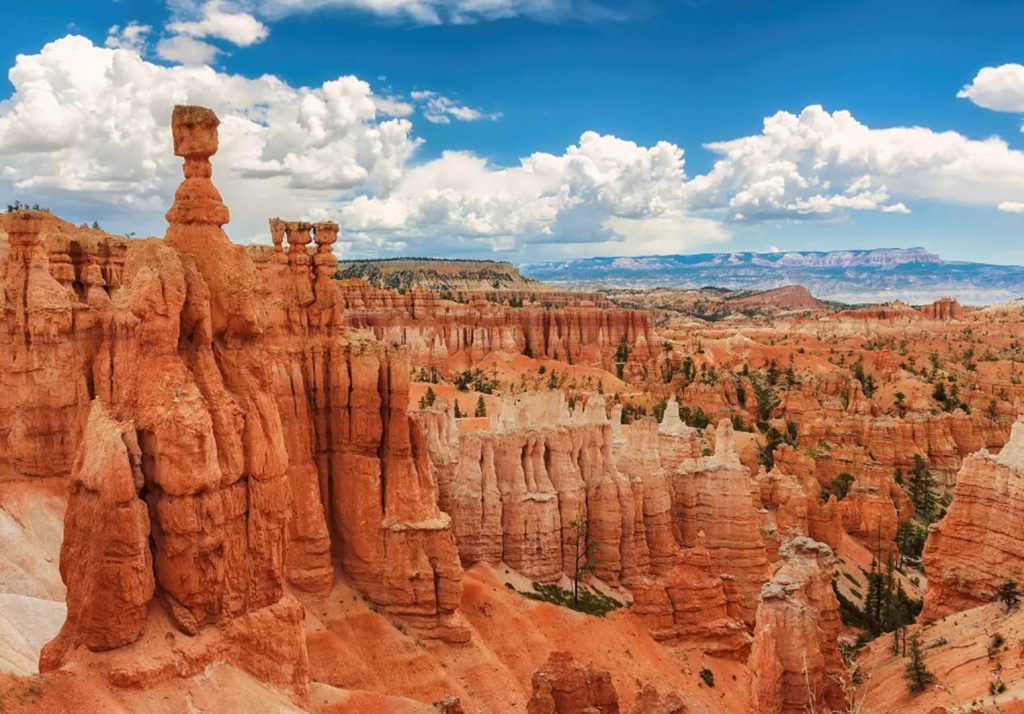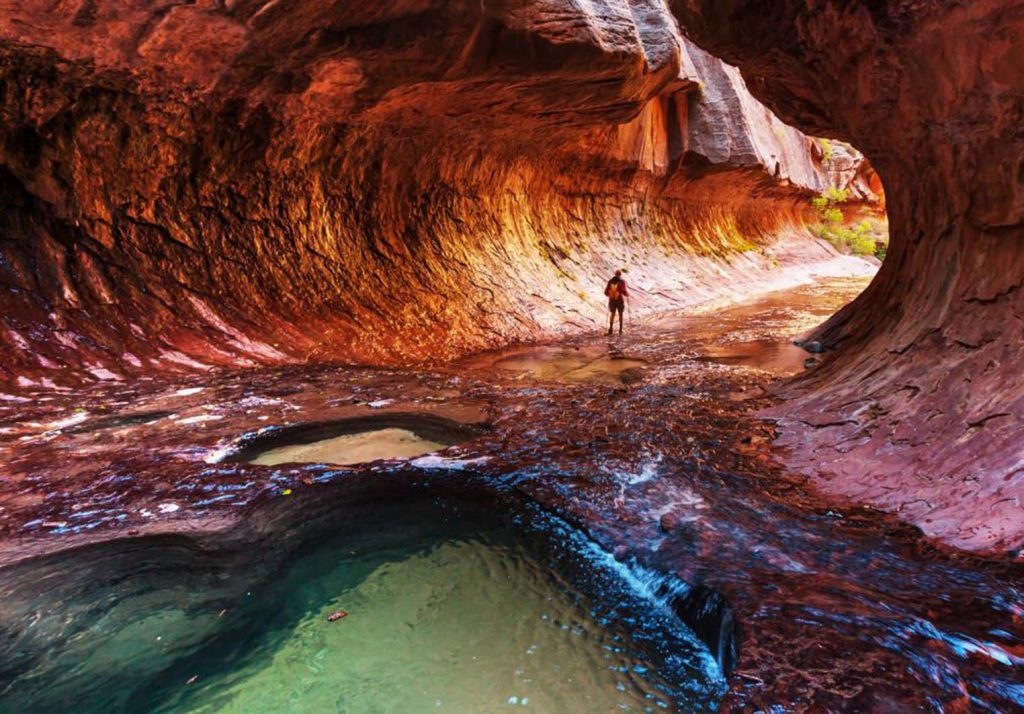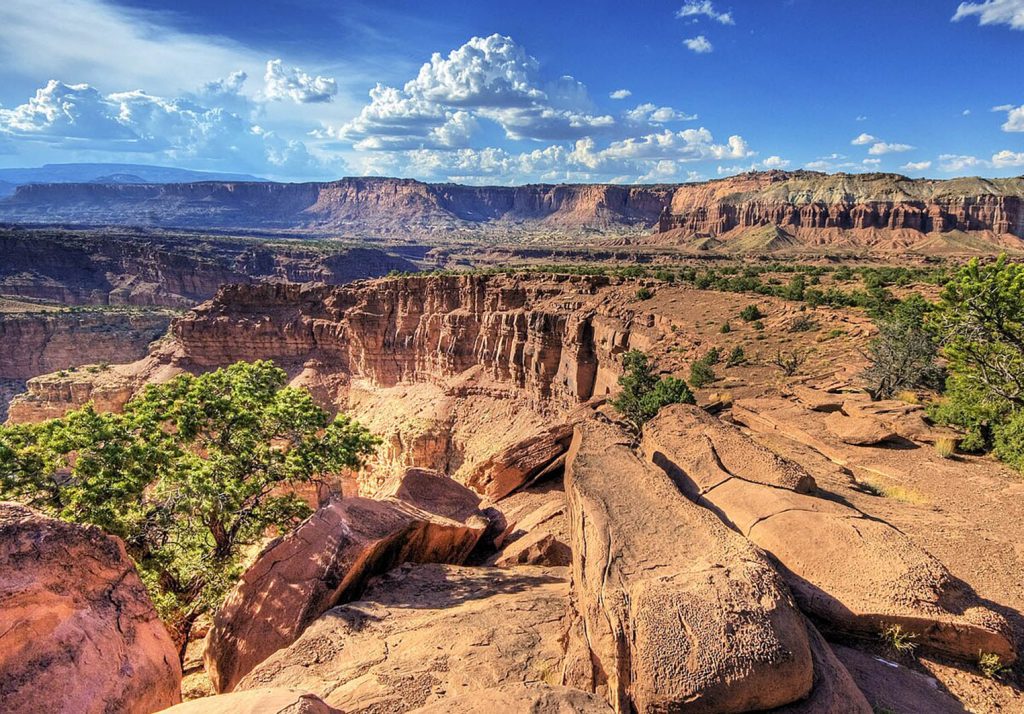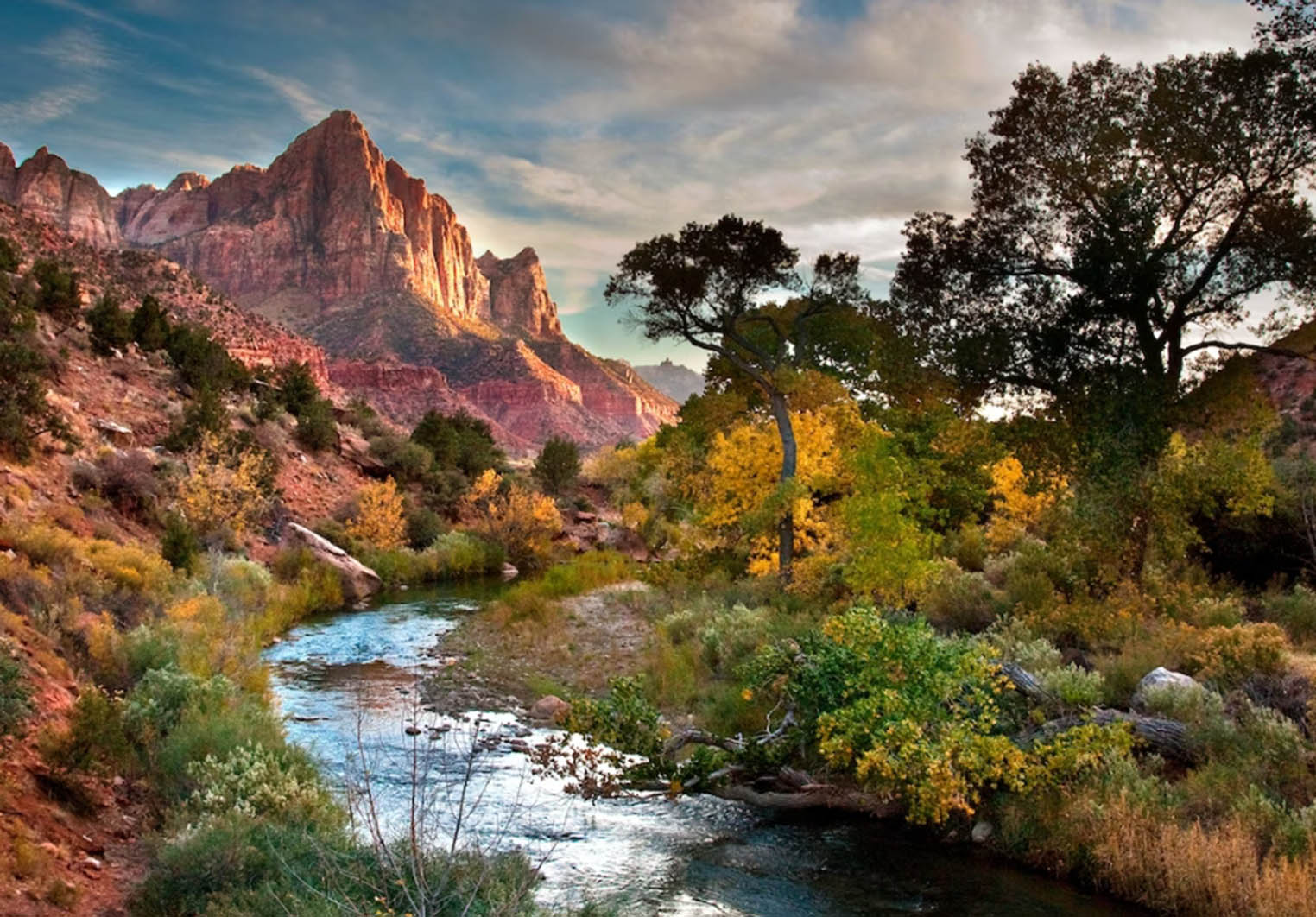Embarking on a recent adventure, my travels led me to the awe-inspiring landscapes of Utah—a state renowned for its breathtaking natural wonders.I’ll share detailed accounts of six essential attractions, delving into services, pros and cons, specific geographical locations, transportation options from the airport and stations, available discounts, ticket prices, recommendation ratings, and personal insights on booking platforms. Join me on this immersive journey through the unparalleled natural beauty of Utah.
Arches National Park:
Location: Arches National Park, Moab, Utah, USA
Nestled in the heart of the red rock country, Arches National Park stands as a geological marvel, boasting over 2,000 natural stone arches. My visit left me in awe of the surreal landscapes, with iconic formations like Delicate Arch and Landscape Arch creating a mesmerizing backdrop.
Situated near Moab, Arches National Park is accessible from Grand Junction Regional Airport and Moab Canyonlands Field Airport. Transportation options range from rental cars to shuttle services, ensuring flexibility for visitors. Limited on-site parking during peak hours can be a drawback, but the park’s shuttle system mitigates congestion.
Entrance fees vary, with discounts available for seniors and children. Annual passes offer excellent value for frequent visitors. My recommendation rating is a resounding 9.5 out of 10, affirming Arches National Park as a must-visit for nature enthusiasts.
Bryce Canyon National Park:
Location: Bryce Canyon National Park, Bryce, Utah, USA
Bryce Canyon National Park unfolds as a geological wonderland, showcasing a unique collection of hoodoos and amphitheaters. The vibrant hues of the rock formations, particularly during sunrise and sunset, create a surreal panorama that left an indelible mark on my memory.Exploring Bryce Canyon National Park is like stepping into a dreamscape sculpted by the hands of nature. The park unfolds before me as a geological wonderland, a canvas painted with the breathtaking artistry of hoodoos and amphitheaters. The landscape is a testament to the incredible forces of erosion that have shaped this unique and mesmerizing terrain.

As I venture into the heart of the park, the sheer scale and diversity of the hoodoos captivate my senses. Towering spires of red and orange rock stand proudly against the backdrop of the clear blue sky. Each hoodoo tells a story of millions of years, a tale etched in the intricate details of its sculpted form.
The magic of Bryce Canyon becomes most apparent during the golden hours of sunrise and sunset. As the sun kisses the horizon, the vibrant hues of the rock formations come alive in a symphony of colors. The rocks transform into a palette of reds, oranges, and purples, casting long shadows and creating a surreal panorama that seems to defy the laws of nature.
Standing on the rim of the canyon, I witness the sunlight dance across the hoodoos, illuminating them in a warm and ethereal glow. The amphitheaters below unfold like natural amphitheaters, the perfect stage for the unfolding drama of light and shadow. It’s a visual feast that etches itself into my memory, a moment where time seems to stand still in the face of such natural splendor.
Hiking through the intricate maze of trails, I find myself immersed in the otherworldly beauty of Bryce Canyon. The juxtaposition of the delicate fins and spires creates a sense of wonder, and each turn reveals a new perspective on this geological masterpiece. The silence of the canyon is punctuated only by the rustle of the wind and the occasional call of a bird, adding to the sense of serenity that pervades the surroundings.
As I bid farewell to Bryce Canyon National Park, I carry with me the vivid images of its surreal landscapes. The vibrant hues of the hoodoos, the grandeur of the amphitheaters, and the play of light at sunrise and sunset have left an indelible mark on my memory. Bryce Canyon is not just a geological wonder; it’s a living, breathing masterpiece that invites contemplation and awe at the forces that have shaped and continue to shape our planet.
Situated in southwestern Utah, Bryce Canyon is accessible from Bryce Canyon Airport and St. George Regional Airport. Rental cars are the most convenient mode of transportation, offering flexibility for exploring the park. Limited on-site parking at popular viewpoints may pose challenges, but shuttle services are available.
Entrance fees contribute to park preservation, with discounts for military personnel and children. Annual passes provide flexibility for multiple visits. My recommendation rating is an enthusiastic 9 out of 10, making Bryce Canyon a must-visit for those seeking geological wonders.
Zion National Park:
Location: Zion National Park, Springdale, Utah, USA
Nestled amidst towering sandstone cliffs, Zion National Park captivates with its striking canyons and diverse landscapes. My exploration included iconic sites like Angels Landing and The Narrows, providing an immersive experience in nature’s grandeur.

Located in Springdale, Zion National Park is easily accessible from Cedar City Regional Airport and St. George Regional Airport. The park operates a shuttle system to manage traffic and parking challenges, ensuring a smooth experience for visitors.
Entrance fees support conservation efforts, with discounts for seniors and children. Shuttle services within the park are free, adding convenience for exploration. My recommendation rating is a solid 8.5 out of 10, establishing Zion National Park as a must-visit for those seeking a harmonious blend of adventure and serenity.
Canyonlands National Park:
Location: Canyonlands National Park, Moab, Utah, USA
Encompassing vast canyons carved by the Colorado River, Canyonlands National Park offers a rugged and untamed landscape. My journey through the park’s districts, including Island in the Sky and The Needles, revealed panoramic vistas and geological formations that spoke to the raw beauty of the desert.Canyonlands National Park, a sprawling expanse of rugged terrain sculpted by the mighty Colorado River, unveils a landscape that speaks to the untamed beauty of the desert. My journey through the park’s diverse districts, including Island in the Sky and The Needles, was a captivating exploration of vast canyons, dramatic vistas, and geological formations that echoed the raw power of nature.
As I entered the Island in the Sky district, I found myself standing on a high plateau, surrounded by sheer cliffs that plunged into the depths of canyons below. The panoramic vistas stretched out before me, revealing a labyrinth of canyons, mesas, and buttes. The immensity of the landscape was awe-inspiring, with the Colorado River winding its way through the canyons, carving a masterpiece over millions of years.
Hiking along the rim, I marveled at the intricate layers of rock formations, each telling a story of the geological processes that shaped this vast desert canvas. The play of light and shadow accentuated the contours of the canyons, creating a dynamic landscape that shifted with the movement of the sun.
Venturing into The Needles district, I encountered a different facet of Canyonlands. The landscape here was punctuated by towering sandstone spires, known as “needles,” rising from the desert floor. Hiking through the labyrinth of red rock formations, I felt a sense of solitude and remoteness, surrounded by the quiet beauty of the desert.
The trails led me to arches, natural bridges, and viewpoints that provided breathtaking glimpses of the rugged terrain. The juxtaposition of the delicate arches against the robust rock formations highlighted the delicate balance between erosion and endurance, a theme prevalent throughout Canyonlands.
The Colorado River, winding its way through the canyons, added a dynamic element to the scenery. Overlooks offered views of the river carving its course through the rocky landscape, a testament to the relentless forces of nature shaping and reshaping the terrain over time.
Canyonlands National Park is a testament to the untamed beauty of the desert, where the elements have sculpted a landscape of unparalleled grandeur. The vast canyons, towering mesas, and surreal rock formations create a sense of reverence for the forces that have shaped this wilderness. As I concluded my journey through this desert realm, I carried with me not just memories of the panoramic vistas but a deep appreciation for the resilience and majesty of Canyonlands’ raw and unbridled beauty.
Situated near Moab, Canyonlands National Park is accessible from Grand Junction Regional Airport and Moab Canyonlands Field Airport. Rental cars are advisable for flexibility, and limited on-site parking is managed effectively. The park’s expansive terrain may require adequate time for exploration.
Entrance fees contribute to park preservation, with discounts available. Annual passes provide cost-effective options for multiple visits. My recommendation rating is an adventurous 8.5 out of 10, making Canyonlands National Park an ideal destination for those seeking the untamed spirit of the desert.
Capitol Reef National Park:
Location: Capitol Reef National Park, Torrey, Utah, USA

Capitol Reef National Park, with its rugged red rock landscapes and iconic Waterpocket Fold, provides a quieter yet equally captivating experience. My journey through the park’s scenic drive and hikes like Hickman Bridge Trail immersed me in a landscape rich in geological wonders.
Located in Torrey, Capitol Reef National Park is accessible from Hanksville Airport and Salt Lake City International Airport. Rental cars are recommended for exploring the park, and on-site parking is generally ample, enhancing the visitor experience.
Entrance fees contribute to park maintenance, with discounts available. The park’s relative tranquility adds to its appeal, making it a hidden gem for nature enthusiasts. My recommendation rating is a serene 8 out of 10, establishing Capitol Reef National Park as an ideal retreat for those seeking solitude amidst natural beauty.
Great Salt Lake:
Location: Great Salt Lake, Salt Lake City, Utah, USA
The Great Salt Lake, a vast inland sea surrounded by stunning salt flats, provides a unique natural spectacle. My visit to Antelope Island State Park, situated within the lake, offered opportunities to witness the otherworldly landscapes and encounter wildlife such as bison and antelope.
Located near Salt Lake City, the Great Salt Lake is accessible from Salt Lake City International Airport. Rental cars offer flexibility for exploration, and on-site parking is generally available.
State park entrance fees contribute to conservation efforts, with discounts for residents and seniors. The lake’s surreal beauty and proximity to urban areas make it a convenient yet enchanting destination. My recommendation rating is a tranquil 8.5 out of 10, making the Great Salt Lake a unique addition to Utah’s natural wonders.
Utah’s natural wonders unfold as a rich tapestry of geological marvels, each destination offering a unique perspective on the state’s diverse landscapes. The six landmarks—Arches National Park, Bryce Canyon National Park, Zion National Park, Canyonlands National Park, Capitol Reef National Park, and the Great Salt Lake—showcase the raw beauty and untamed spirit of the American Southwest. As I reflect on my immersive journey through these unparalleled destinations, I am filled with appreciation for the meticulous preservation efforts, diverse experiences, and the profound connection with nature that Utah has to offer. With an average recommendation rating of a remarkable 8.75 out of 10, Utah stands as a haven for travelers seeking an unforgettable encounter with the wonders of the natural world.
